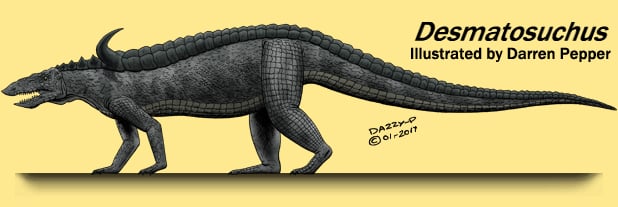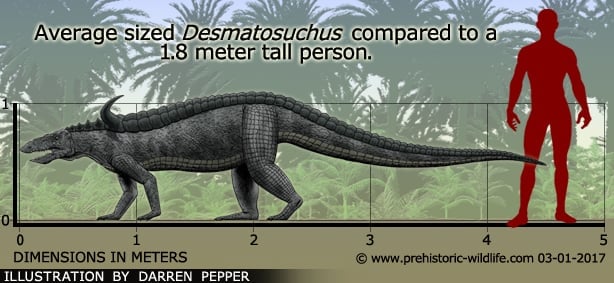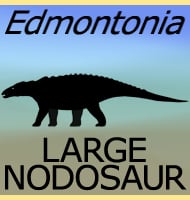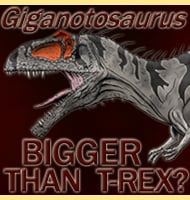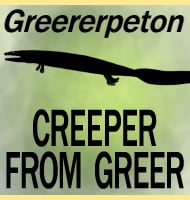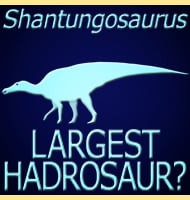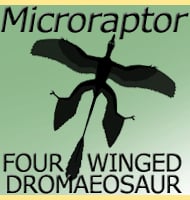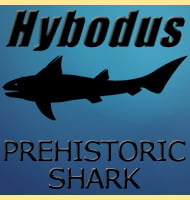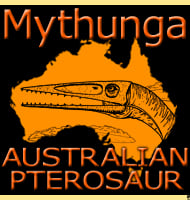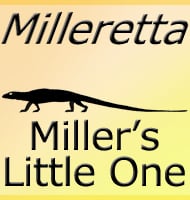In Depth
Desmatosuchus is one of the better known aetosaurs that were squat quadrupedal archosaurs that fed upon low growing vegetation. This diet is suggested by the presence of peg like teeth that were best suited for stripping off fronds of fern-like vegetation. Not only is Desmatosuchus one of the better known of its group but at up to five meters long it was one of the largest.
The key area that Desmatosuchus is perhaps most famous for is the armour along its back. All aetosaurs had bony armour down the length of their backs to provide some protection from predators that could rear up and attack them from above, but Desmatosuchus took this protection even further with the addition of two forty-five centimetre spikes that projected sideways from above its shoulders. Other albeit smaller spikes also ran down either side of its body.
The spikes that ran down the upper flanks of Desmatosuchus certainly would have made attacks from predators more difficult, but how much protection the larger spikes gave remains uncertain. They would have made shoulder area attacks more difficult, but the head was still relatively unprotected, and if they were just for defence it would make sense that similarly sized spikes would run further up and down the body. The enlargement of the shoulder spikes may therefore be more for the purpose of display, not only to allow Desmatosuchus to identify others of its kind from similarly proportioned aetosaurs, but also a sign of maturity like deer antlers.
Further Reading
Further reading- Cranial anatomy of Desmatosuchus haplocerus (Reptilia: Archosauria: Stagonolepididae). – Zoological Journal of the Linnean Society. 136 (1): 97–111. – Bryan J. Small – 2002. – A new species of the Late Triassic aetosaur Desmatosuchus (Archosauria:Pseudosuchia). – Compte Rendus Palevol 4(4): 327-340. – W. G. Parker – 2005. – Reassessment of the aetosaur “Desmatosuchus” chamaensis with a reanalysis of the phylogeny of the Aetosauria (Archosauria: Pseudosuchia). – Journal of Systematic Palaeontology 5(1): 41-68. – W. G. Parker – 2007. – Description of new material of the aetosaur Desmatosuchus spurensis (Archosauria: Suchia) from the Chinle Formation of Arizona and a revision of the genus Desmatosuchus. – PaleoBios 28(1): 1-40. – W. G. Parker – 2009.
